Tower of Fantasy is more than just sci-fi Genshin Impact
Though the free-to-play MMO has clearly been looking over Genshin's shoulder
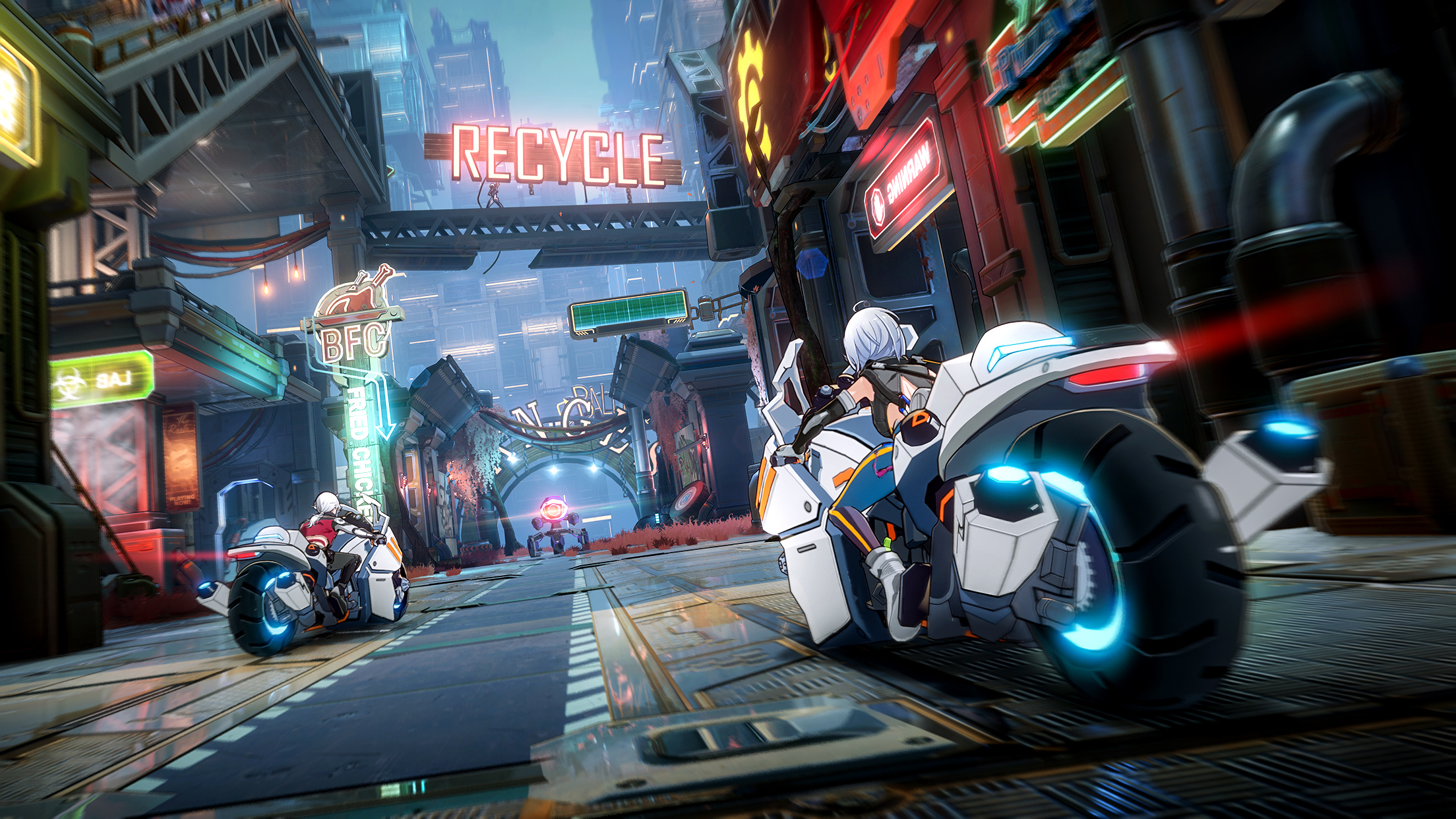
As sci-fi MMO Tower of Fantasy barrels toward its August 10 global release date on PC and mobile, developer Hotta Studio has the difficult task of deciding when to deflect comparisons to Genshin Impact and when to embrace them. It's impossible and frankly foolish to ignore the similarities between the two, but while Tower of Fantasy is clearly a post-Genshin game, after playing a few hours of a preview build I'd say the overlap is mostly surface-level.
Just as Genshin used DNA from the likes of The Legend of Zelda: Breath of the Wild to build its own take on an open world, Tower of Fantasy is leaning on some of Genshin's best ideas to support its MMO-lite ambitions, and it seems to be working fairly well.
Looking past Genshin
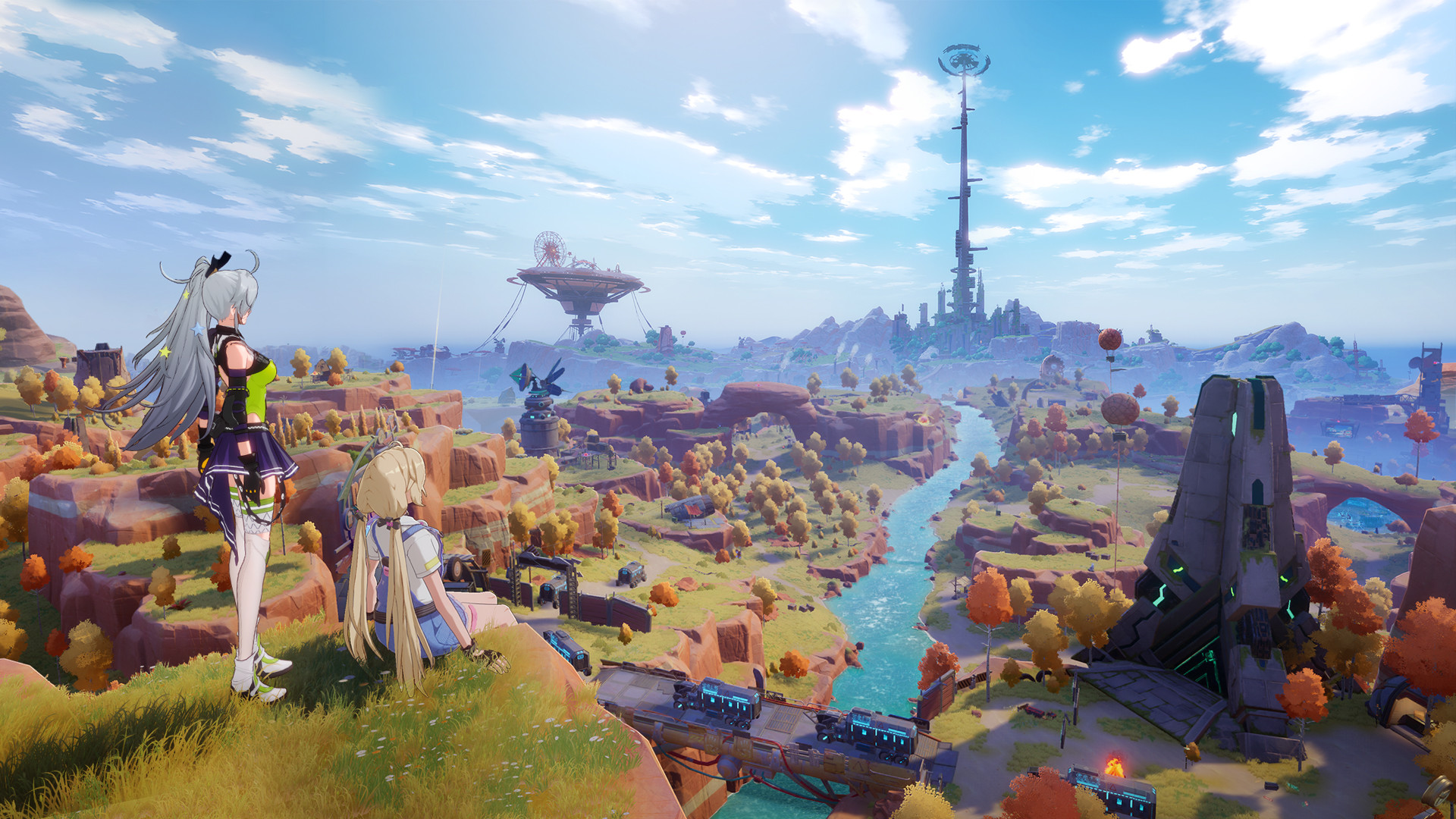
A representative for Hotta told me as much at a recent pre-launch event. "Oh, yes, that's a question we get asked a lot," she said when I mentioned the rampant Genshin Impact comparisons. "Of course, Genshin is a great game loved by a lot of players around the world. It set a new standard for the industry when it comes to design, narrative, and quality. But there are things that differentiate us from other games. I think any players, after playing for just a few hours, will agree on this."
Like Genshin, Tower of Fantasy lets you choose between two playable twins and swiftly introduces a small, fairy-like assistant character. Apart from this intro and some oddly familiar UI elements – especially the challenge-filled guide book – that's largely where the similarities end. The opening hours of the game reveal more differences than anything, starting with Tower of Fantasy's breakneck combat.
Weapons are everything in this game.
You can equip and swap between three weapons to chain normal attacks, special moves on cooldowns, and "discharge" moves readied by dealing damage. I've already seen swords, dual blades, scythes, spears, bows, chakrams, great swords, and a range of guns, all with their own attack combos and special moves. Flow seamlessly into aerial combos, perfectly dodge attacks to briefly slow time, and swap weapons at any point to extend combos, counter elemental weaknesses, or break enemy armor. Tower of Fantasy is fast, and it's pretty easy to pick up. I'm still learning the slightly wonky dodge timing, but fights quickly become satisfying.
Weapons are everything in this game. You can level them up, stuff 'em with collectible chips, and enhance them using materials from duplicate copies, and this is the pursuit for the power-up grind. The weapons you equip affect your overall stats and provide resonance bonuses which play into the DPS, tank, and healer roles associated with MMOs, though there aren't actually any hard roles or jobs. You can use any combination and play however you want, which ties into one of the most surprising differences between Tower of Fantasy and loads of other free-to-play gacha games.
You got your MMO in my gacha game
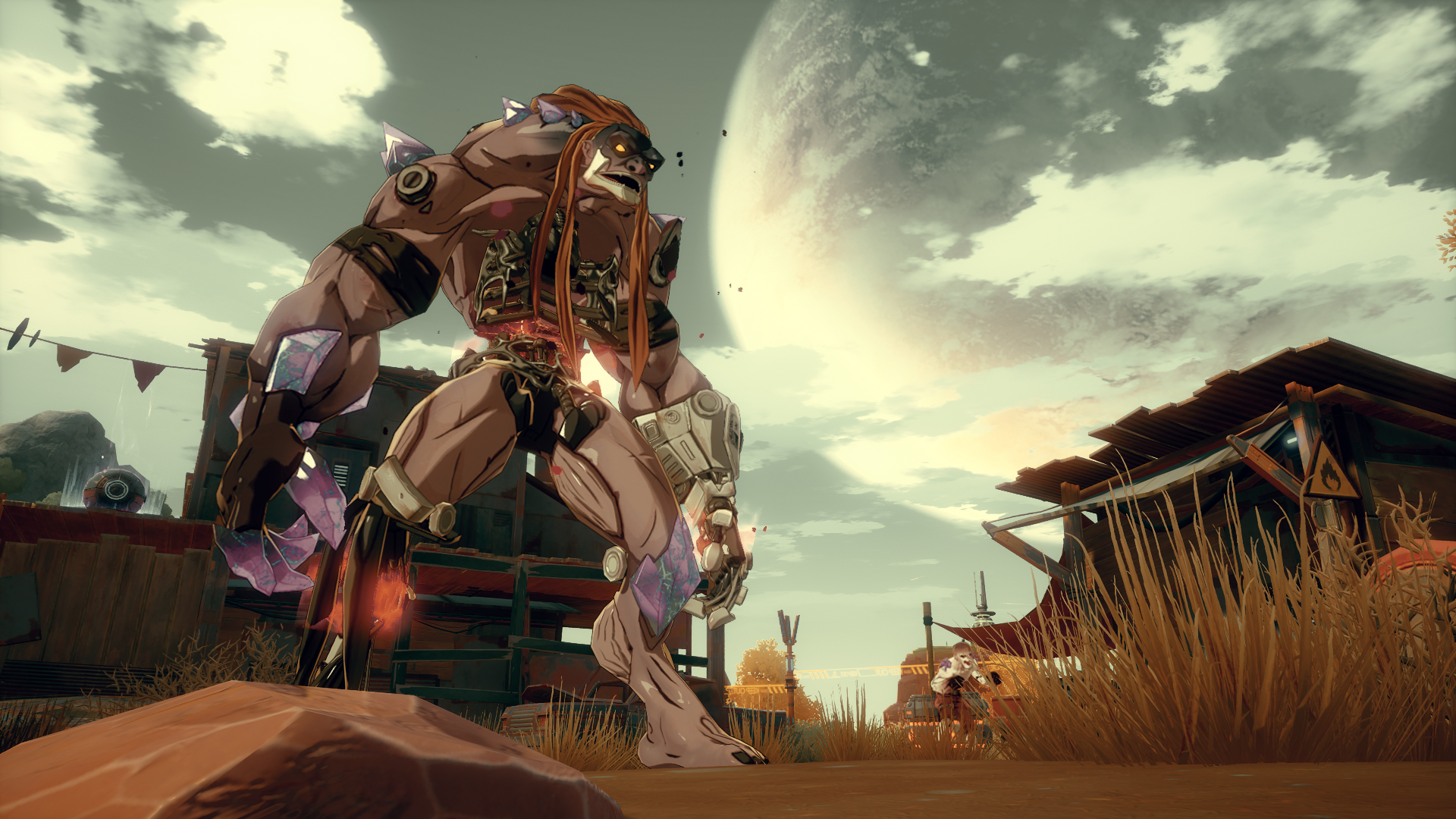
You don't really roll for Tower of Fantasy characters. Instead, you roll for weapons that have Simulacra tied to them. Think of Granblue Fantasy, but even more weapon-dependent. Simulacra are basically digitized versions of elite warriors that let you borrow their skills and, if you want, their appearances. The characters behind Simulacra can have their own story quests, but as collectibles, Simulacra are essentially just bonus skins that come with much more highly prized weapons. You can run around as your favorite Simulacra if you want, but with how in-depth Tower of Fantasy's character creator goes, I reckon a lot of people will rock their custom avatar most of the time.
Sign up to the GamesRadar+ Newsletter
Weekly digests, tales from the communities you love, and more
While few people actually use Genshin Impact's main character, making your own protagonist is a big selling point for Tower of Fantasy. Its character creator reminds me of Code Vein in a good way, right down to the option to add extra hair. There are about a zillion tabs of features, accessories, colors, and sliders. There are even optimizations to prevent hair styles from clipping through certain outfits, though this does limit outfit choices for long-haired characters. You can also share your custom creations or import avatars uploaded by other players, and I can see people spending a lot of time recreating their favorite anime or gacha characters. Your character's fully voiced as well, which is nice.
You can customize much more than your weapons and appearance, too. Tower of Fantasy has more MMO blood in it than I anticipated – at times reminding me of something like Tera Online – including collectible mounts. This being a sci-fi post-apocalypse, a lot of machines have this cobbled-together charm to them that works well with mounts like motorbikes and mechs, and they're a godsend out in the field.
On top of mounts and vehicles, you can collect and equip relics that can totally change the way you play. Some relics, like the jetpack you unlock very early on, are essential to exploration but can also be used in combat. I'm likewise hoping to unlock the jetboard soon so I can glide over water with ease. Others are more combat-focused, giving you a big burst of offense or defense on a longer cooldown. Some combat relics are practically set pieces in their own right, echoing the turret shootouts of some of the game's early quests. Building a relic loadout to suit your weapons gives the game a bit more depth, and I like the idea of swapping between open-world and boss-killing relics.
Tower of Fantasy's MMO elements also include parties of four which can then join up to pit dozens of players against world bosses, though I obviously couldn't sample this in my solo build. I'm told there are even guild-like Crews for up to 180 players to join and support, which could give the game an edge as a social experience. And while I also haven't experienced its shared world yet since I've been playing alone, I do like the idea of randomly running into and helping other players while exploring.
The gotchas of gacha
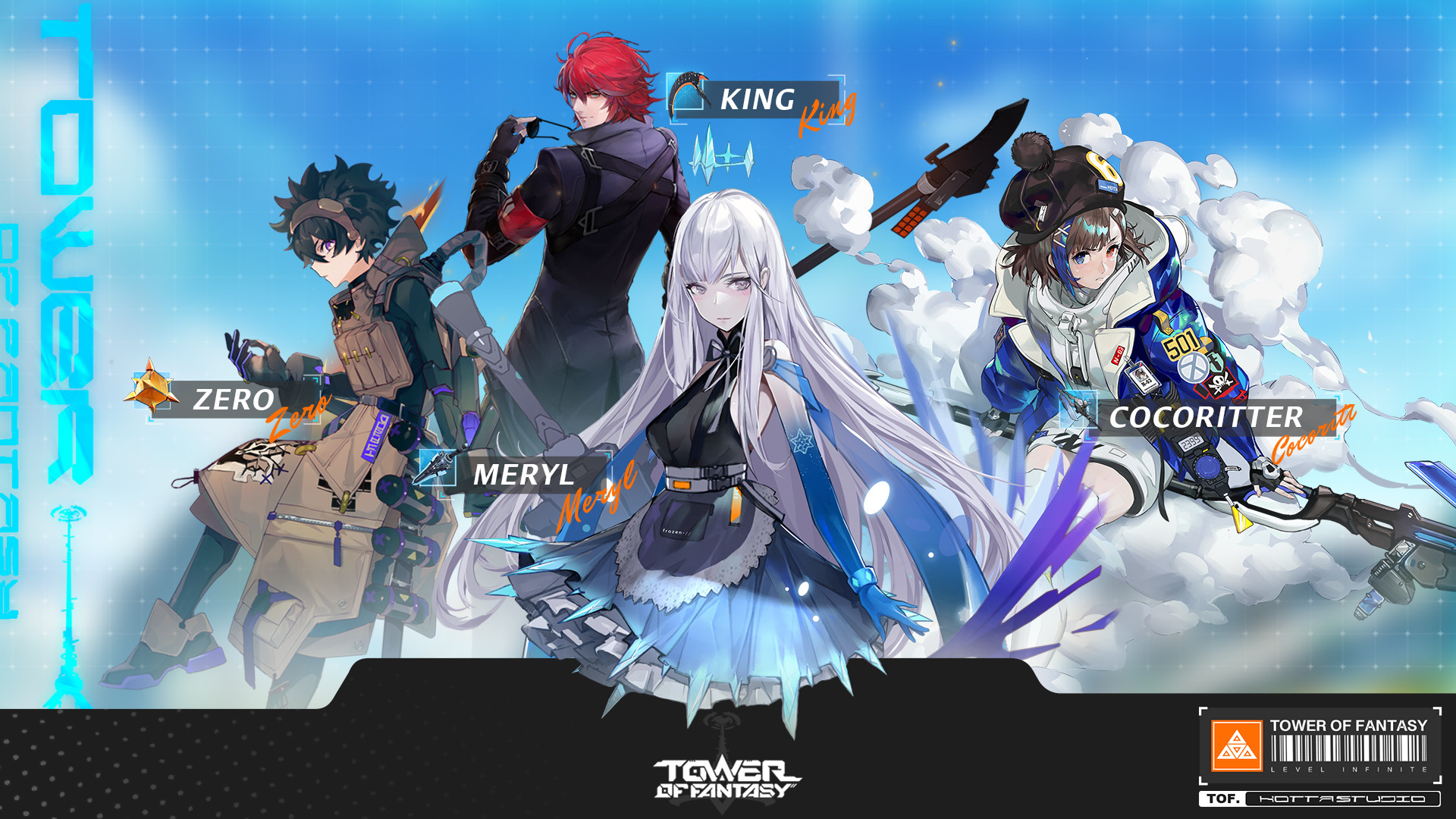
With that being said, Tower of Fantasy is a true-blue gacha game, right down to the brutal RNG. The main banner has a pity of 80 rolls – eventually guaranteeing an SSR reward – while the permanent standard banner seems to be pity-less and totally random, and the odds of hitting an SSR weapon start at under 1%. Getting duplicate weapons unlocks new and exclusive bonuses, but you can also obtain dupes by spending currencies accumulated through rolling, which I like the sound of at least. You can get rare chips and upgrade materials on banners, too, and I'm assuming you can also roll for rare relics, though I've only gotten relics from story stuff so far.
Tower of Fantasy notably includes PvP modes, and with this being a gacha game, there are understandable concerns of your credit card becoming an unbeatable power boost. "We understand the challenges posed by powering up your gear with money and the potential unfairness that can be brought to PvP," Hotta assured me when I asked about balancing. "We designed our PvP quite carefully. There's a certain arena you can enter for PvP where you're very likely to encounter characters of similar power levels, but we are still developing that part and fine-tuning it." This is another feature I'll really need to try for myself, as gacha and PvP can undeniably be a toxic combination.
The end game grind is a key area where Tower of Fantasy could overtake the relatively easy and cyclical content of many gachas
I've at least earned a lot of free standard banner rolls just by exploring the world and completing quests, but this is offset by how much of a crapshoot standard can be. Hotta insists that "what we've heard from our community is that this game is relatively more free player-friendly; we give away quite a lot of the in-game currencies and materials you may need to level up," and that feels mostly true so far, though I've barely gotten my feet wet. Gachas usually start you off with a rush of freebies anyway, so the game's overall loot cadence remains to be seen. However, after playing Genshin Impact for nearly two years, the idea of getting targeted SSR constellations and finding standard banner rolls lying around out in the world is pretty appealing.
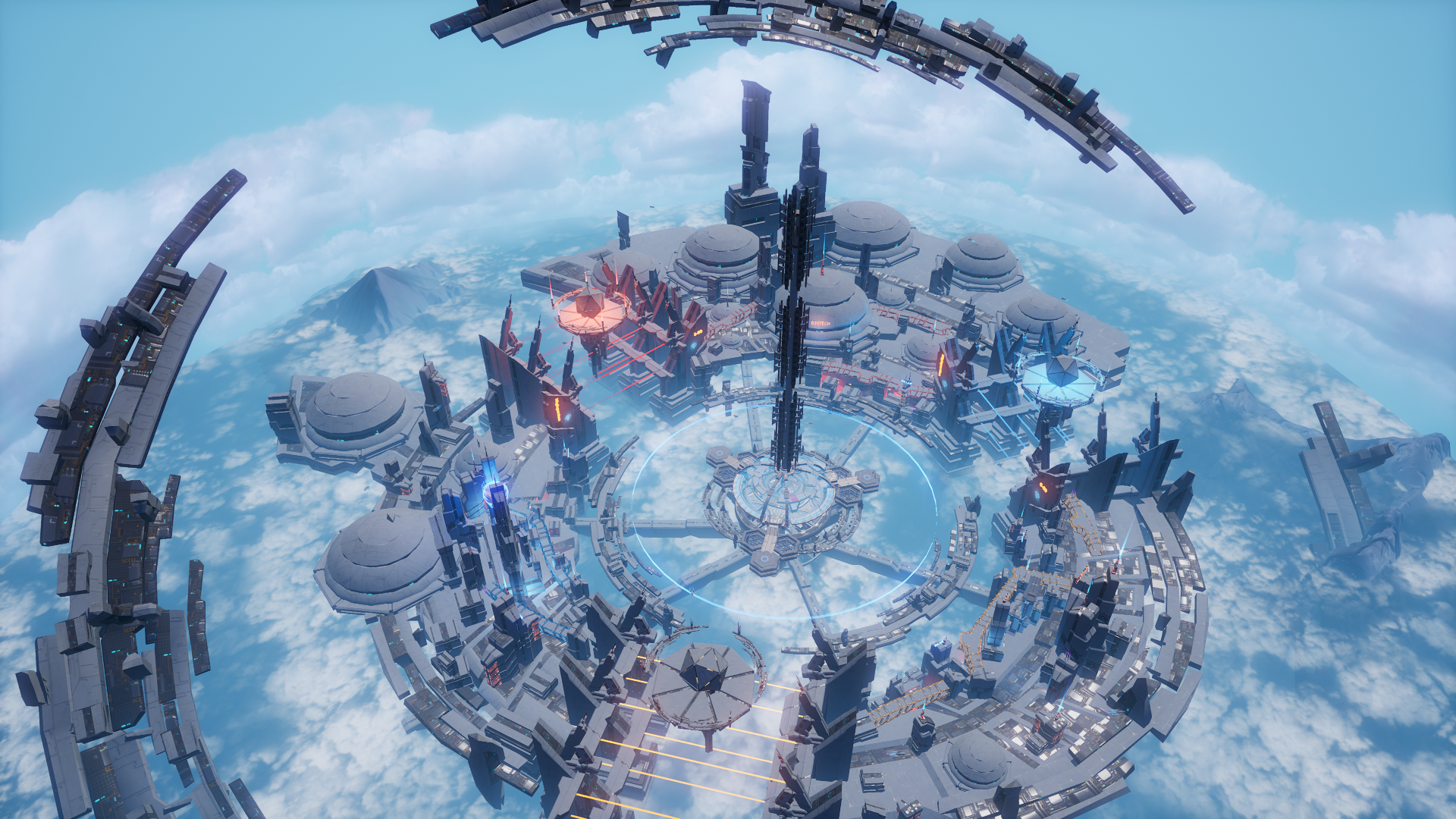
My brief play time has also limited my understanding of the end game for Tower of Fantasy, and as an MMO, the end game grind is a key area where it could overtake the relatively easy and cyclical content of many gachas. Those world bosses sound promising, and I'm really hoping to see something on the level of a raid. I'm told the global version of the game will loosely follow the content schedule of the Chinese version, but not perfectly, with regional events and festivals, balance and technical updates, and other patches changing things up. Tower of Fantasy will launch with six main regions to explore and more areas to come, including a cyber-themed update due shortly after launch.
Ultimately, I'm not bothered by the many ways Tower of Fantasy cribs from Genshin Impact. All art builds on art and nobody creates in a vacuum, and quite frankly, if games are going to emulate something, emulating something I like is a bonus. My immediate response to the game mirrors my initial reaction to Genshin: this is a fun, completely free open-world action-RPG with great art and fun combat, so it's absolutely worth trying. I don't know if it will become a big ongoing game for me – it's mainly Genshin's characters that keep me coming back, and I don't think chasing stronger weapons will have the same appeal in the long-run – but I always say that the best takeaway I can have after previewing a game is that I want to play more of it, and that's definitely the case here.

Austin has been a game journalist for 12 years, having freelanced for the likes of PC Gamer, Eurogamer, IGN, Sports Illustrated, and more while finishing his journalism degree. He's been with GamesRadar+ since 2019. They've yet to realize his position is a cover for his career-spanning Destiny column, and he's kept the ruse going with a lot of news and the occasional feature, all while playing as many roguelikes as possible.


